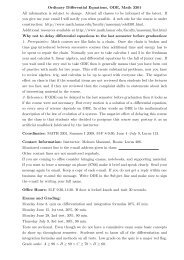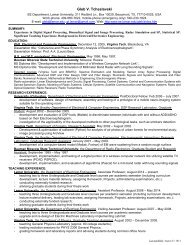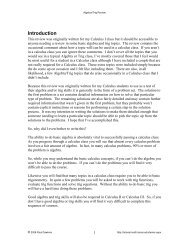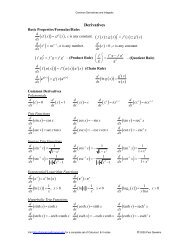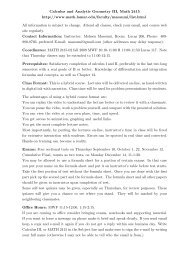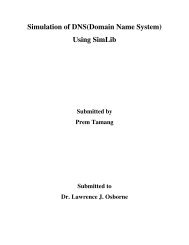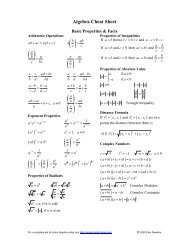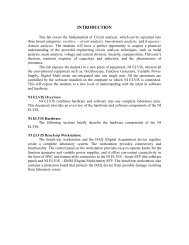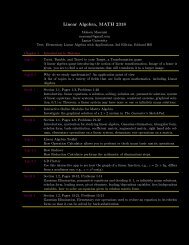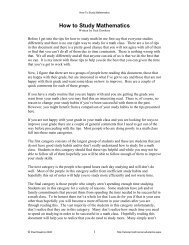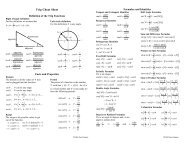LUEE 2012 Self-Study Report (PDF) - Lamar University Electrical ...
LUEE 2012 Self-Study Report (PDF) - Lamar University Electrical ...
LUEE 2012 Self-Study Report (PDF) - Lamar University Electrical ...
You also want an ePaper? Increase the reach of your titles
YUMPU automatically turns print PDFs into web optimized ePapers that Google loves.
As an example of the linkage, consider the first course objective "Understand the basicconcepts of Ohm's law and Kirchhoff's loop voltage and node current laws." Thisobjective links to Criterion 3a, our outcome that states that students will be able to applyknowledge of the physical sciences, mathematics, and engineering fundamentals to thesolution of electrical engineering problems. Although Ohm's Law is typically introducedin HS physics and then later revisited in college physics, the application of it to electricalengineering problems, specifically those involving Kirchoff's loop voltage and nodecurrent laws, occurs in our course.The metric goals for these course objectives are determined by the faculty in the form ofhomework assignments, quizzes and exams that validate the student achievement of theobjective. The minimal level of achievement necessary to produce graduates that willultimately achieve our Program Objectives following their graduation is set at a minimalscore of 70%. We have sufficient overlap in the curriculum to insure program outcomecoverage and the results of our Program Objective assessments have validated this. Thisminimal score is also consistent with the minimal passing level established by theNational Council of Examiners for Engineering and Surveying (NCEES) for thefundamentals (FE) and principles and practice (PE) exams for electrical engineers toobtain professional registration. It is important, however, that we emphasize here that ouroutcomes assessment is not predicated on GPA, which is an aggregate average acrossall courses in the curriculum to include the liberal arts core.Primary qualitative data to assess our program outcomes is determined from courseevaluations. Prior to 2004 we used written forms passed out in class near the end of eachsemester. In 2004 the university ran a pilot program using the College of Engineering as atest case for on-line course evaluations and we have been utilizing that system since then.The company that we use, "Online Course Evaluations .com" † , sets up student accessautomatically through the registration database maintained by <strong>Lamar</strong> <strong>University</strong>.Approximately three weeks before the end of the semester, access is activated andstudents may go online through any web browser and input their response to the coursesurveys. The process is anonymous to the department and the faculty and approximatelyone week after commencement the results may be viewed. The questions served on theform are broad in nature and comments directed towards teaching effectiveness; however,the survey is a narrative design to encourage students to comment on the course content.Although the faculty collectively do not see the specific survey results, they do get ageneral summary compiled by the chair.Commencement Questionnaires—graduating seniors are polled just prior to graduationeach year. The survey requests information such as post graduation contact data, jobinterviews and offers and alternate contact points. With respect to program outcomes, thesurvey asks for an opinion of the student with respect to preparedness in terms of overallprogram outcomes. The survey then focuses on soft outcomes that include the following:• the impact of engineering solutions in a global and societal context• recognition of the need for, and an ability to engage in, life-long learning† http://service.onlinecourseevaluations.com/index.aspx23




